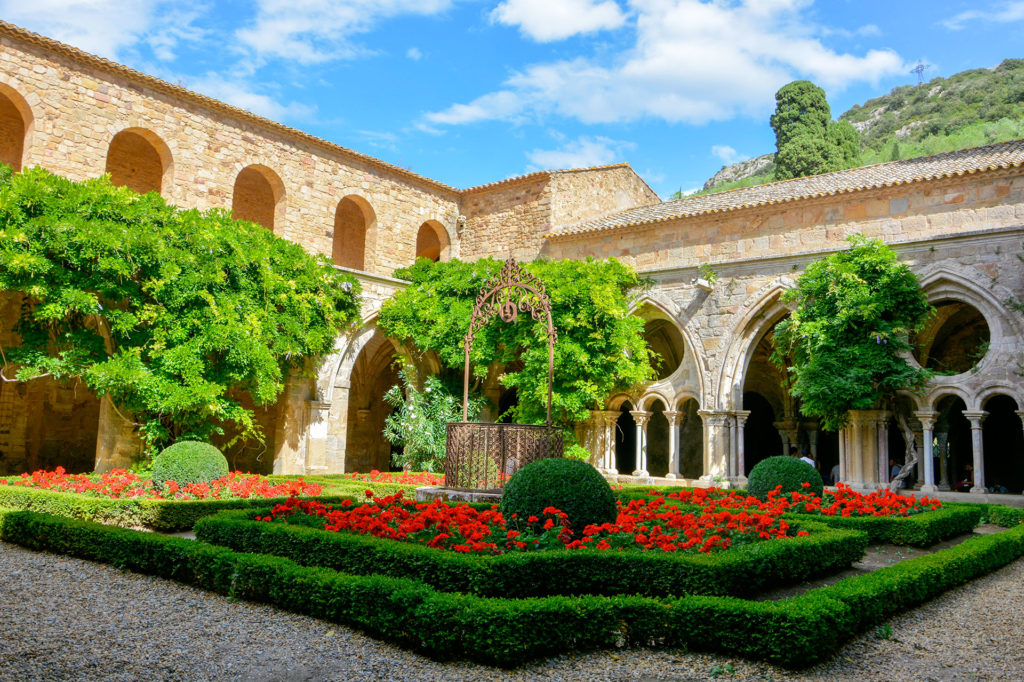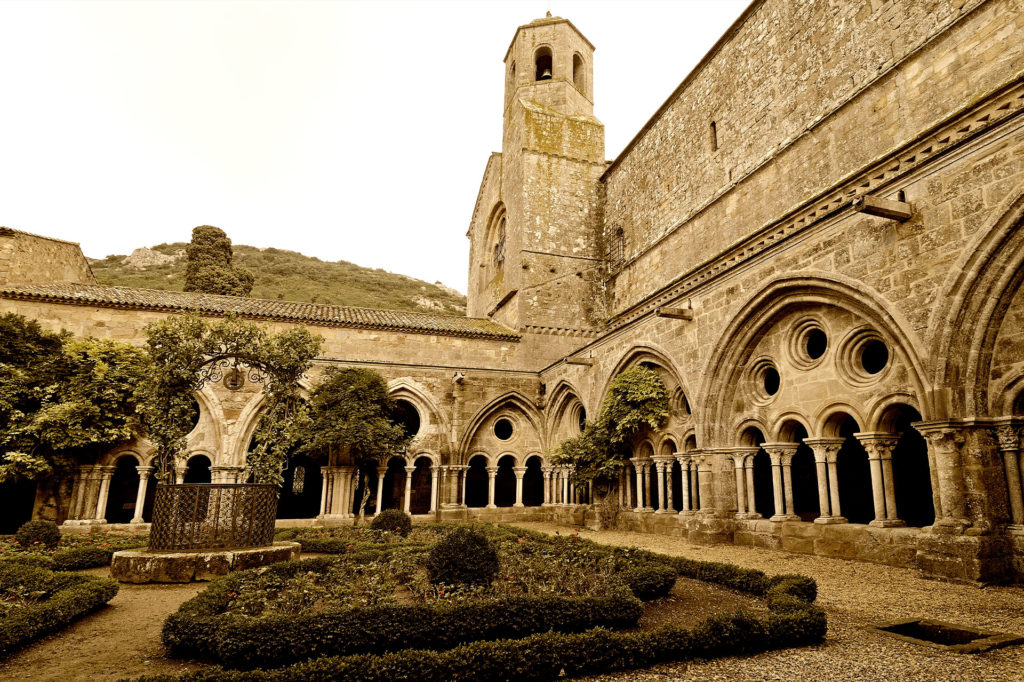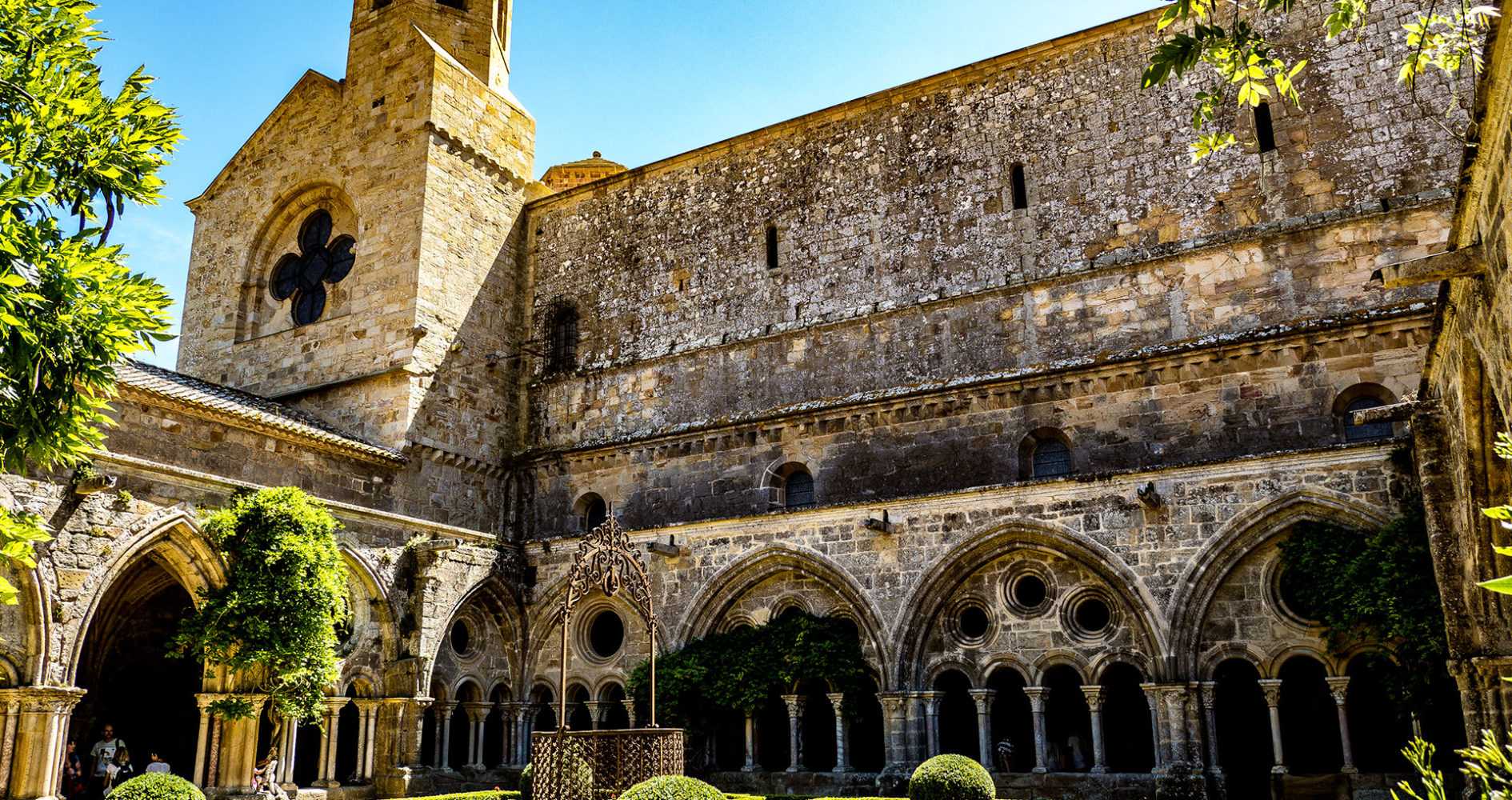Fontfroide Abbey#Historical tour
Fifteen kilometers from Narbonne in the Aude department, Fontfroide Abbey is one of France’s great Cistercian abbeys. An opportunity for the curious and history buffs to visit an incredibly well-preserved, prestigious monument.
Let us tell you
the story of Fontfroide#Medieval town
Nestled in theCorbières mountains, between hills and forest, 20 km from Camping La Pinède near Narbonne, Fontfroide Abbey is an ancient 12th-century Cistercian abbey, a miraculously preserved sacred site, now labelled a ” grand site d’Occitanie “.
Fontfroide Abbey is open all year round. A tour guide will take you back in time to the abbey’s heyday and to monastic life as it was lived in the Middle Ages, with plenty of anecdotes and historical insights. From the abbey church to the lay monks’ buildings, the cloister and the 12th-century chapter house, everything exudes spirituality. A place dedicated to prayer, but not only!
In 1908, artist and art collector Gustave Fayet bought Fontfroide Abbey. He invites his artist friends. In the library, Odilon Redon creates a monumental triptych – Le Jour, la Nuit et le Silence – a true Symbolist masterpiece. In the abbey church, French musician and stained-glass master Richard Burgsthal created stained-glass windows inspired by the Russian ballets that performed in Paris in the early 20th century.
Even today, the abbey palace and Salle Fayet are home to artists in residence. In summer, Fontfroide Abbey reveals itself in a different light… at night. Historic frescoes and monumental projections illuminate the walls. Thus illuminated and set to music, Fontfroide is revealed in all its splendour, beauty and mystery.
And to the pleasure of the eyes we add that of the taste buds: a visit to the cellar will be an opportunity to taste Fontfroide wines. Vines have been grown here for almost 900 years, inherited from the Cistercian monks.
The gardens of Fontfroide#Just like Italy
Beyond the beauty of its monastic complex, Fontfroide also owes its fame to its Italian-style terraced gardens, created at the end of the 16th century and adorned with statues, marble-sculpted vases, ponds and fountains, including the impressive Bassin de Neptune.
Two signposted paths offer a pleasant stroll through gardens classified as “Jardin Remarquable” and “Refuge LPO”. The Roseraie de Fontfroide boasts one of the largest rose collections in the South of France, with over 2,500 roses of 14 different varieties. There’s also a scented garden planted with fragrant garrigue flowers: honeysuckle, thyme, lavender, rosemary, broom, lemongrass…


Journey through
1000 years of history# Rich history
Founded in 1093 by Cistercian monks, Fontfroide Abbey is an exceptional blend of Romanesque, Gothic and neo-classical architecture. It takes its name from the nearby spring, Fons Frigidus, or Cold Fountain.
In the Middle Ages, monks lived here in total autarky, with no contact with the outside world. At the time, the monastic settlement included a mill, a tannery, a bakery, a cooperage, and accommodation for the doctor and surgeon… From the 10th century onwards, new buildings were added, giving Fontfroide a château-like appearance: a large main courtyard, sculpted pediments, terraced gardens…
In 1208, the assassination of Pierre de Castelnau, a monk from Fontfroide who had become Pope Innocent III’s legate, triggered the Crusade against the Cathar heresy. In the second half of the 13th century, the abbey received numerous donations from knight Olivier de Termes to repair the damage done to the abbey.
In 1791, during the French Revolution, the abbey was abandoned until 1848, when the monks were again expelled at the beginning of the 20th century. When Gustave Fayet bought the abbey in 1908, the French painter and collector, a close friend of Paul Gauguin, turned Fontfroide into an artistic Mecca for the Belle Époque.


